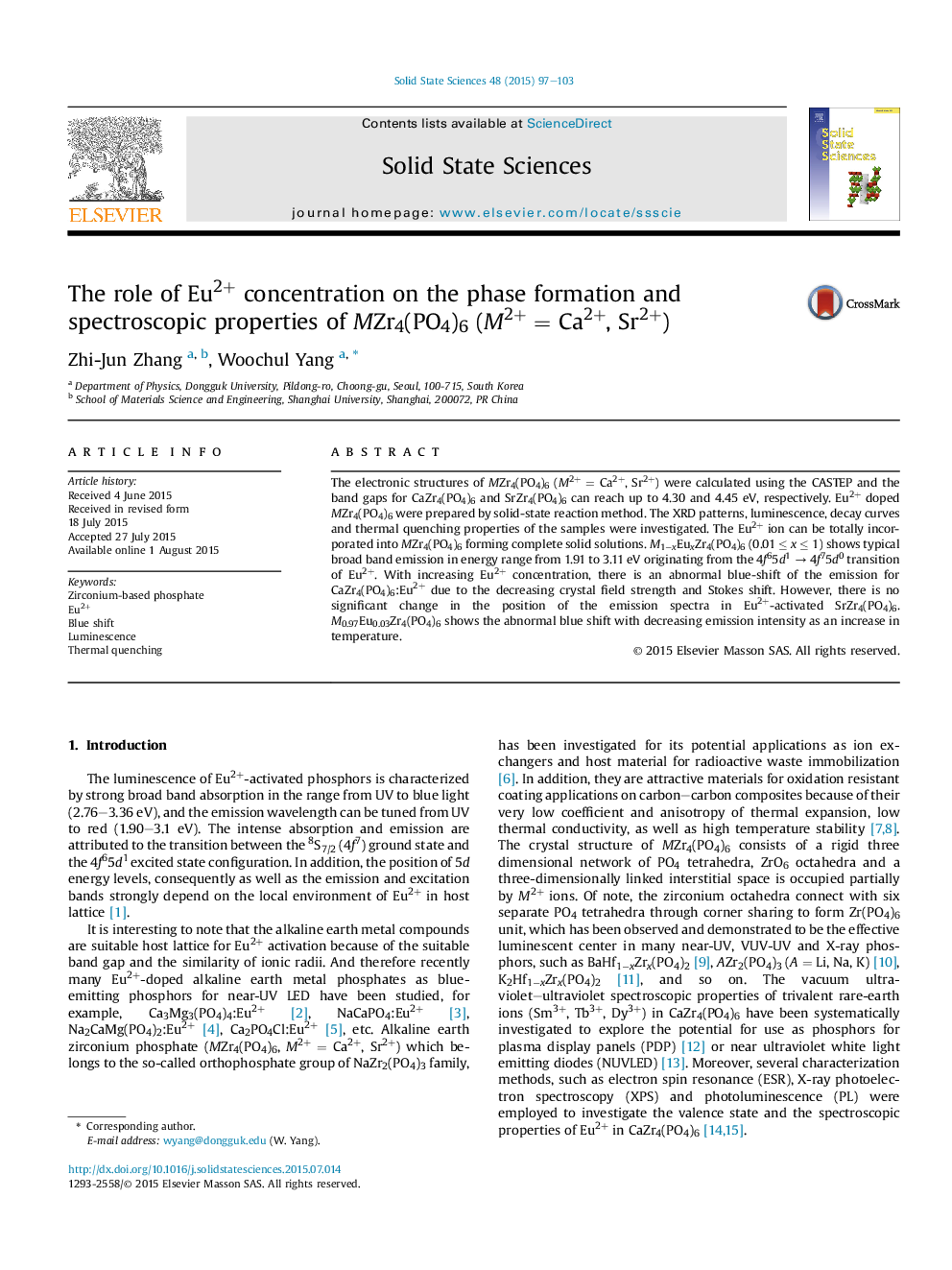| Article ID | Journal | Published Year | Pages | File Type |
|---|---|---|---|---|
| 1504137 | Solid State Sciences | 2015 | 7 Pages |
•Eu2+ can be totally incorporated into MZr4(PO4)6 forming complete solid solutions.•The substitution of Ca2+ by Sr2+ exhibits little influence of the band gap and electronic structure of MZr4(PO4)6.•There is an abnormal blue-shift for Eu2+ in CaZr4(PO4)6 with increasing Eu2+ concentration or temperature.
The electronic structures of MZr4(PO4)6 (M2+ = Ca2+, Sr2+) were calculated using the CASTEP and the band gaps for CaZr4(PO4)6 and SrZr4(PO4)6 can reach up to 4.30 and 4.45 eV, respectively. Eu2+ doped MZr4(PO4)6 were prepared by solid-state reaction method. The XRD patterns, luminescence, decay curves and thermal quenching properties of the samples were investigated. The Eu2+ ion can be totally incorporated into MZr4(PO4)6 forming complete solid solutions. M1−xEuxZr4(PO4)6 (0.01 ≤ x ≤ 1) shows typical broad band emission in energy range from 1.91 to 3.11 eV originating from the 4f65d1 → 4f75d0 transition of Eu2+. With increasing Eu2+ concentration, there is an abnormal blue-shift of the emission for CaZr4(PO4)6:Eu2+ due to the decreasing crystal field strength and Stokes shift. However, there is no significant change in the position of the emission spectra in Eu2+-activated SrZr4(PO4)6. M0.97Eu0.03Zr4(PO4)6 shows the abnormal blue shift with decreasing emission intensity as an increase in temperature.
Graphical abstractEmission spectra of M1−xEuxZr4(PO4)6 (0.01 ≤ x ≤ 1): M = Ca (a), M = Sr (b). The inset of (a) shows the CIE chromaticity diagram of M1−xEuxZr4(PO4)6.Figure optionsDownload full-size imageDownload as PowerPoint slide
